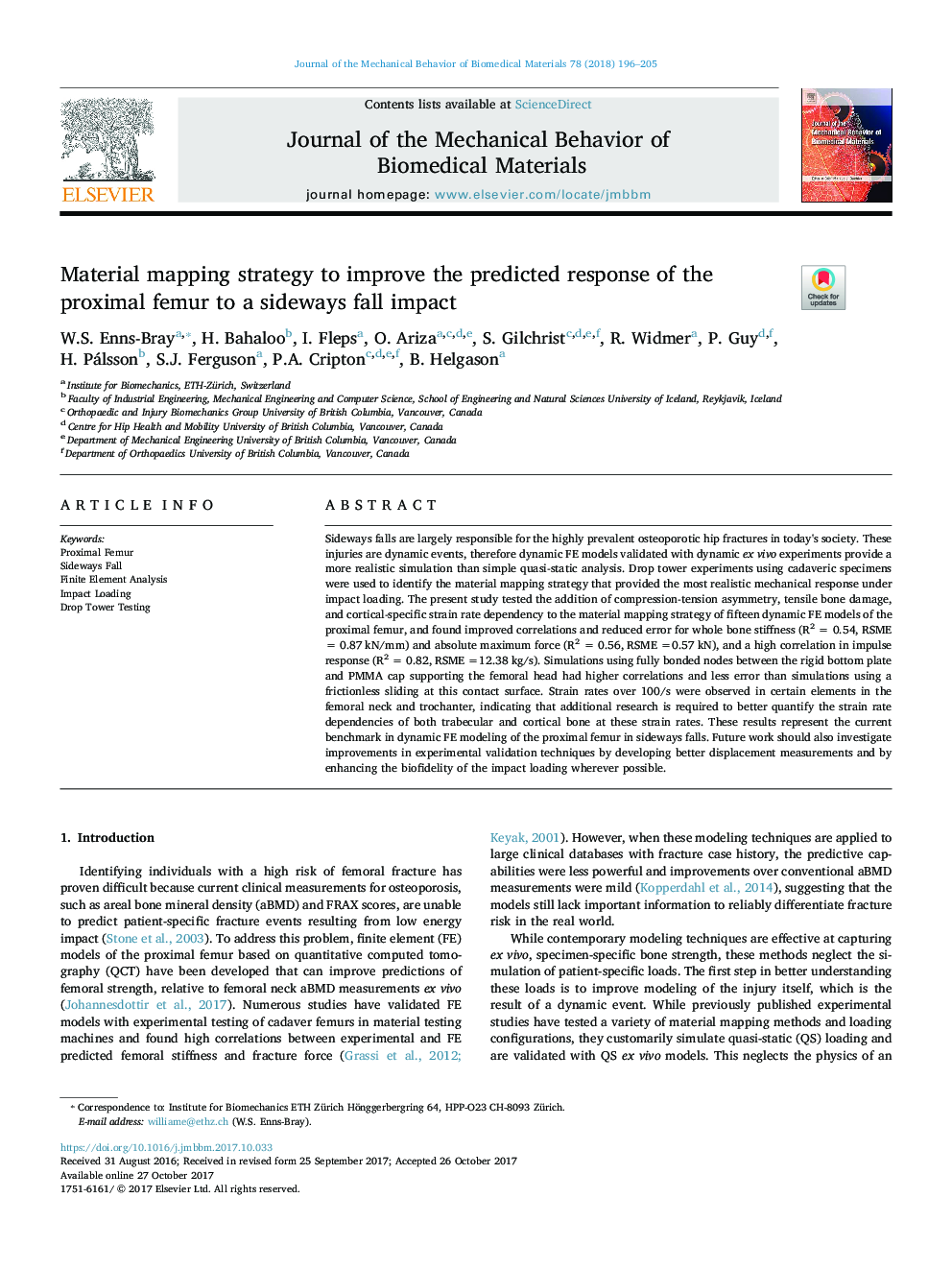| Article ID | Journal | Published Year | Pages | File Type |
|---|---|---|---|---|
| 7207308 | Journal of the Mechanical Behavior of Biomedical Materials | 2018 | 10 Pages |
Abstract
Sideways falls are largely responsible for the highly prevalent osteoporotic hip fractures in today's society. These injuries are dynamic events, therefore dynamic FE models validated with dynamic ex vivo experiments provide a more realistic simulation than simple quasi-static analysis. Drop tower experiments using cadaveric specimens were used to identify the material mapping strategy that provided the most realistic mechanical response under impact loading. The present study tested the addition of compression-tension asymmetry, tensile bone damage, and cortical-specific strain rate dependency to the material mapping strategy of fifteen dynamic FE models of the proximal femur, and found improved correlations and reduced error for whole bone stiffness (R2 = 0.54, RSME = 0.87Â kN/mm) and absolute maximum force (R2 = 0.56, RSME =0.57Â kN), and a high correlation in impulse response (R2 = 0.82, RSME =12.38Â kg/s). Simulations using fully bonded nodes between the rigid bottom plate and PMMA cap supporting the femoral head had higher correlations and less error than simulations using a frictionless sliding at this contact surface. Strain rates over 100/s were observed in certain elements in the femoral neck and trochanter, indicating that additional research is required to better quantify the strain rate dependencies of both trabecular and cortical bone at these strain rates. These results represent the current benchmark in dynamic FE modeling of the proximal femur in sideways falls. Future work should also investigate improvements in experimental validation techniques by developing better displacement measurements and by enhancing the biofidelity of the impact loading wherever possible.
Related Topics
Physical Sciences and Engineering
Engineering
Biomedical Engineering
Authors
W.S. Enns-Bray, H. Bahaloo, I. Fleps, O. Ariza, S. Gilchrist, R. Widmer, P. Guy, H. Pálsson, S.J. Ferguson, P.A. Cripton, B. Helgason,
